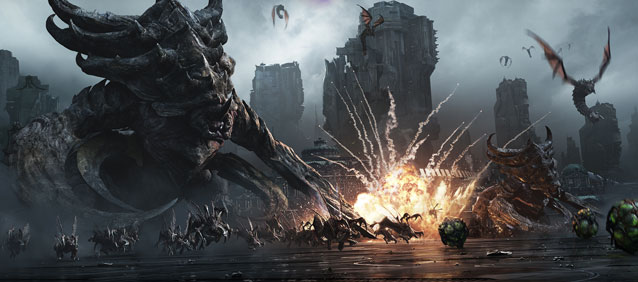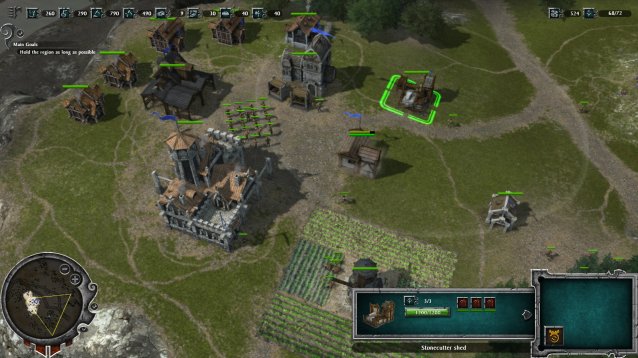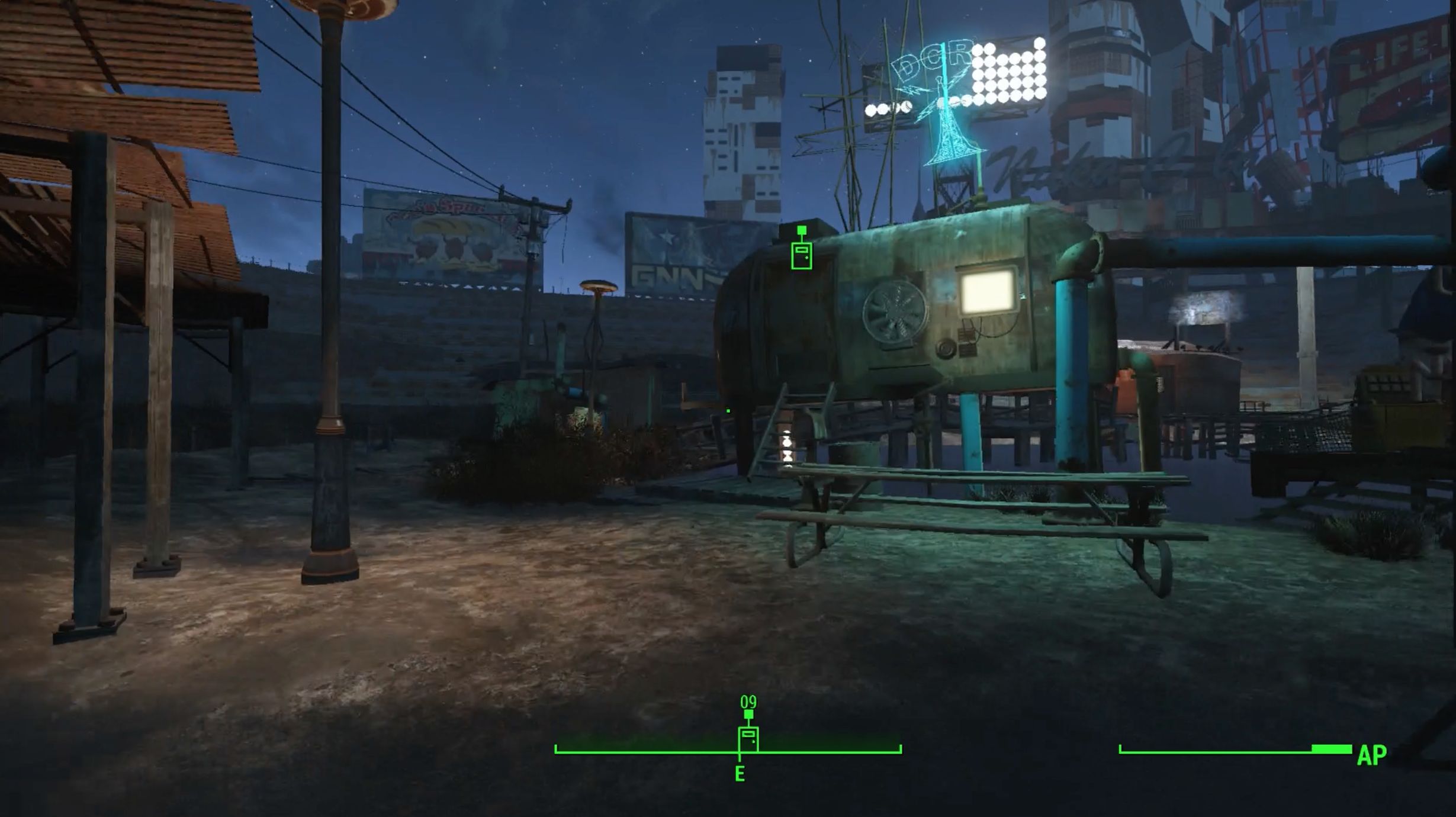


Time to delve back into Madden. The newest iteration from EA comes with a few new tweaks and changes, while most of the game will stay familiar to the hardcore fans it’s pulled in over the years. New plays, new custom playbooks, a new collision detection system to make tackles more realistic, and a slew of franchise mode changes to make the experience that much more realistic — bidding for free agents, cutting draft picks, hot/cold streaks. Get a better idea of everything new and exciting coming to Madden NFL 12 with out patented Game Guide, breaking down and covering the many modes of Madden.
For more maddening Madden lists, check out Game Front’s achievements, trophies, and cheats.
Check back soon for updates.
Speed
Aside from their overall rating, a player’s speed at any given moment is determined by how hard you push the control stick in the desired direction. The more pressure you apply to the stick, the faster your player will run. The sensitivity of this function allows you to have more control over your player’s movements during key moments of a play.
For example, dropping your QB back at a steady pace can lure a rushing lineman into a false sense of security. If timed correctly, suddenly increasing his speed in a different direction can help you evade the sack at the last moment, buying you more time with the ball. This type of instant acceleration can also come in handy when scrambling or running the ball in yourself.
Controlling the speed in this way is not only useful for quarterbacks and running plays, but it can also advance your maneuverability when going out for the pass. Running at full tilt to catch a long pass is only effective if your receiver has a higher overall speed than the man covering him. For those instances when you’re not the fastest man on the field, try starting out at a slow pace and keep your opponent at an even distance with you. When the moment is right, accelerate in one long dash to get open for the throw or use a series of increasing sprints to further throw your coverage off track. You can also reverse this tactic, by starting out fast and then suddenly slowing to a crawl, for the same results.
On defense, using a rate of speed that’s just above average is still useful in guiding you through or around the lineman after the snap. When the path is clear, you can then choose to accelerate at the maximum level for a last second surprise sack. When covering a receiver, you can choose to follow a few steps behind, to make him appear open for the pass, then sprint towards him at full throttle when the ball is thrown in his direction.
Quick Tips
Knowing Your Opponent
In reality, football teams prepare for each other by watching tapes of their competitions previous performances. While you will not have access to such resources in Madden 12, planning a strategy based on how the opposing team is likely to operate can be a useful tactic in winning games. It can help in avoiding situations where your team will likely be outmatched and also help you devise strategies that exploit the opposition’s shortcomings. The key to utilizing the information that’s available is by being thorough in your research.
The most effective way to start scouting the opposition is by investigating your own team’s strengths and weaknesses. In knowing which areas of the game your players are most likely to succeed, will aid you in stacking the deck against an opponent even further when it comes to their vulnerabilities. This will also help you decide where your gameplay needs additional protection or foresight in situations where the other team already outmatches you. Doing this kind of strategic self-reflection can help determine player substitutions or it can even affect the decision-making process as early as team selection.
There are primarily two resources that will provide the information necessary in forming a strategy against your opponent. The first method of research is scanning the other team’s roster, which should occur before the game begins. Make a note of which players are rated the strongest overall and the positions they are filling. If the wide receivers are primarily talented, then you’d be smart to employ a coverage defense more times than not and you may even want to substitute in players with high speed ratings to make sure your defense is solid all around. If the opposition has a talented offensive line, then choosing plays that run you up the middle or require your QB to hesitate should be avoided. The second method is to also check the stats for the game you’re currently playing to see which of their men is causing you the most trouble, then plan accordingly to either increase the defense on this player or avoid plays that will send the ball carrier his way.
Quick Tips
Play-Calling
Using your team’s playbook effectively is possibly the most important part of any game you take part in. Knowledge of which defensive formations or offensive assaults will provide the best outcome in any given situation is acquired with intuition and through trial and error. The most important executions in play-calling are: reading the other team’s defensive formation and using the competition’s offensive strength’s to your advantage.
If you want to determine if the defense is in a zone or man-to-man cover formation, motion one of your receivers to the other to the side of the field before the snap. If a member of the defense follows along with him, they’re using man-to-man coverage. If no one follows him, then they’re in a zone coverage formation. To read the blitz, watch for linebackers moved close to the line of scrimmage and in the available gaps. Depending on how deep your opponent’s players are positioned will also give you an idea on how far your passing plays will be effective.
It shouldn’t take long to see how what parts of your opponent’s offense is making the most impact on moving the ball upfield. It’s important to remember that for every offensive play is a defensive play that will squash it. If the offense is consistently beating you with fake-out maneuvers, such as the play-action, then set-up the blitz to take of advantage of the hesitation they require to pull these off. Use zone coverage to eliminate successful plays that use the sideline area or midfield to their advantage and use man-to-man coverage if the same wide receivers seem to be getting the best of you more than others.
Quick Tips
Substitutions
Voluntary substitutions should be made before and during the game to provide you with the most advantageous roster available. Replacing a player can be done for a variety of reasons, whether it’s for the sake of cold-hard strategy or your own personal preferences. Balancing individual match-ups between you and your opponent and utilizing a player with a specific athletic ability over one with a higher rating on the whole are all acceptable excuse for changing up the men on the field.
The first round of substitutions you can make are before the game even begins. Skim through your roster and make sure that the players sitting in back-up positions do not possess a higher overall rating then the starters. When you make a substitution during the game, it should usually be the result of witnessing particular players fail repeatedly during certain scenarios or in confrontations with the same member of the opposition. If your starting quarterback relies primarily on his speed, but the defense happens to excel at making the blitz, then replace him with a QB with strong passing abilities, regardless of overall rating.
Another reason to replace one of your teammates is because they lack a specific talent . Even if a wide receiver has an overall rating in the upper 80s , he can be substituted for a player rated 60 as long as the replacement has superiority where it counts for that position, such as in speed or completions.
Quick Tips
This rating system should only be used as a preliminary guide to playing the game. Firstly, because the ratings tend to change in Franchise mode and also if you’re downloading the latest rosters throughout the current NFL season. The second reason these stats should be used as a rough strategy outline is because the rankings only give you an idea of what the teams or players are capable of and not how they will actually perform every time. Selecting from the top-rated lists is more a matter of improving your odds of success during a game rather than guaranteeing victory.
3 Highest-Rated Teams Overall
Top-Rated Quarterbacks Overall
Top-Rated Running Backs Overall
Top-Rated Wide Receivers Overall
Top-Rated Defensive Ends Overall
Top-Rated Linebackers Overall
Passing
Completing a pass in this game will sometime require you to have eyes in the back and on both sides of your head. During these plays, the greatest fear is obviously getting sacked or having the ball intercepted by the opposition. Aside from avoiding these two game-changing scenarios, you will also be responsible for: spotting the open receivers, moving to a strategic throwing location behind the line, keeping an eye on the current integrity of your offensive line and making sure the QB doesn’t get injured to the point of no return. Being prepared for each of these looming challenges, before the play even begins, will greatly increase your chances of a successful completion.
When it comes to avoiding the sack, knowing what your quarterback and offensive line are capable of under pressure can make all the difference. If your QB has the gift of speed, use it to fall back at a greater distance than you normally would. This will keep you out of harm’s way long enough to assess the situation calmly, while still being able to quickly regain the extra yards you’ve taken should things go awry. It also means you are equipped to dodge the threat of a sack more times than not.
Now if your quarterback can’t even outrun the ref, you will need to rely on the sturdiness of your lineman. Take note as to which areas of the line seem to be breached more often than not and during which types of plays this occurs, then choose your next battle plan and quarterback movement accordingly. You can even pick out a few individual lineman that consistently hold their ground and migrate towards them during the play for protection. Figuring out who can do what is mostly obtained through experience with the team and knowing the player’s game stats ahead of time.
Avoiding an interception can basically boil down to two things: memorizing the routes you’ve chosen for the receivers and not panicking. Dismissing either one can suddenly lead from having possession to then seeing points go up on your opponent’s side of the board all in the same play. If you’re a breath away from being sacked, take the loss of yards rather than make a blind throw that turns the ball over. Be patient with your receivers and try to give them the time to get open, while keeping a tally in your head of the players who make the majority of their catches on varying routes.
Quick Tips
Running
Running the ball is strategically sound for any number of the situations you may find yourself in during gameplay. These plays are ideal for: eliminating the threat of interceptions (which tend to occur more often than fumbles), running out the clock when you have fourth quarter lead and securing the goal line touchdowns that lack the space required for confidently passing the ball. A successful run will normally depend on the capabilities of the ball carrier, but knowing which type of run will work best in regards to your field position and the defense’s formation is also essential.
When choosing from the playbook, be mindful of what the selected route entails and whether or not your running back is equipped to use it. For instance, a ball carrier with heightened speed will be better suited to running wide before the defensive line can break through and hightailing it upfield along the sideline. Likewise, an exceptionally sturdy or strong running back is conditioned for punching a hole up the middle and plowing through would-be tacklers when success can be determined by a matter of inches. When you need to recover field position after being sacked or race against the clock to put points on the board, go with speed and agility. When there’s just a couple of yards between you and the first down or end zone, go with brute strength.
Your current location on the field, in terms of both actual placement and distance to the first down line, is one of the major factors in determining which type of running play to execute. If your team is arranged in close proximity to the sidelines, cutting across the width of the field for strategic or evasive purposes has now been limited to one direction. Either use a toss play to get the ball to the running back or pursue a wide route back towards the middle of the field. When you are positioned a few yards from the first down line or the end zone, select plays that send your running back straight forward without any horizontal movement to avoid losing ground.
To work around the other team’s preventative measures, pinpoint the widest gaps between each player on the defense and use them as pathways for breaking away down the field. Before the snap, check the pre-determined route you’ve selected and make sure that it doesn’t intersect with a member of the opposition. If the defensive lineman have clustered together for a blitz or rushing attack, a toss will get the ball to safety or you can use a draw play to open a pathway for escape in the wave of oncoming opposition.
Quick Tips
Scrambling
Scrambling with the quarterback is a risky maneuver that should only occur as a last resort or under very opportune circumstances. Unless you have a particularly fast QB or a path to first down opens during a passing play that you just can’t resist, it’s usually advisable to avoid this type of offense. The primary reasons for this is that it puts your quarterback at risk for permanent injury or a loss of yards if your evasion techniques require you to back up the field even further than usual. The upside to scrambling is that the defense is rarely expecting it and it can allow your receivers more time to get open.
One of the opportune times to scramble is when your offensive line is successfully holding back the would-be sackers and gaps have opened to give your QB a clear shot at first down. Another time to run the quarterback is on deep passing plays where man-to-man coverage has drawn the defense a far distance up the field. If your quarterback is known for his strength, then it might also be advisable to use him when pushing through for the touchdown when your team is on the goal line.
High Speed QBs
Quick Tips
Tackling
As with the majority of Madden games, there are two distinct ways to tackle the competition. One method is by simply steering yourself into direct contact with the target, requiring no extraneous button-work beyond finding the mark. Using this technique will result in your player wrapping his arms around the opposition and dragging him to the ground. The second method of tackling utilizes a quick thrust of the control stick just before impact. This takedown is famously known as a “hit stick” and the end result is your player putting all of his strength behind a devastating blow which sends the victim off his feet with as much violence as possible. There are advantages and disadvantages to either of these tackling maneuvers.
The lower-impact tackle can be executed using the minimum amount of the required fore-sight, speed and positioning to secure the down. It also has a high rate of effectiveness on opposing players in motion due to its grappling-based nature. Even if a player on the run manages to slip away from the hold, he will be slowed down a great deal in the process. The drawbacks to this tackle are caused mostly by the differences in strength between the individuals. The strongest of players can still function to some extent during its execution and some can even walk into the end zone with competitors clinging to their backs.
Whereas the wrap-around tackle functions mainly to acquire another down and slow the forward progress of the other team, the hit stick operates more like an offensive weapon for tipping the scales of each play in your favor. Depending on the strength difference or specific circumstance, applying this more powerful tackle increases the odds of causing a fumble or sometimes even injuring the player on the receiving end beyond recovery. If timed precisely, it can stop a runner dead in his tracks or at least push him out of bounds to stop the play. It can also be aimed to strike the upper or lower region of your target’s body, depending on which direction you push the control stick. Despite it’s game-changing force and striking precision, the hit stick is flawed in one major way. Execution. The timing required for building up the force necessary to successfully land a hit stick,leaves slim moments of opportunities to pull one off and pushing the stick too early or late renders it ineffective. Also, because it targets specific areas of the body, a simple hopping, ducking or spinning evasion will cause your player to fly right by or bounce off the opposition.
Quick Tips
Stopping the Run
Unlike the methods used for pass defense, running plays cannot be foiled through delegation amongst your NPC teammates. Since the only target during these plays is the man with the ball, you should always make a point to take control of characters who will reach the running back first. Once your player is strategically placed behind the line of scrimmage, it’ll be up to you to find a way through the offensive line and take down the opposing ball carrier. However, none of this can occur successfully until you choose a defensive formation that offers sufficient protection along the line of scrimmage.
Unless the NPC players on your team manage to blitz straight through the offensive line, it’s likely that your opponent will evade harm for the first few seconds of his run. To ensure that the opposing running back’s advancement stays to a minimum or that he is tackled for a loss, take control of a player on the defensive line who is not assigned to coverage or man-to-man offense. Move to the outside of the line until your lane to the ball-carrier is unobstructed for the time being. When the snap occurs, push your player to full speed in the direction of the quarterback in the hopes of executing a sack or crossing paths with the running back as he accepts the handoff. If your route remains unguarded, you can even attempt a hit stick to cause a fumble. If members of the offensive line get in the way, guide your lineman into a one-on-one confrontation and push against him until you get by. As you make your way towards the quarter, also be on the look-out for a toss play so that you can change the direction of your rush as needed.
If you believe the opposing team is going to run the ball on the next play, arrange your defensive formation to cover the outside routes in the event of a toss or if the running back manages to evade you. When trying to predict a running play, do the simple math of how the competition can overcome you most effectively, while avoiding unnecessary risks. Hypothetically, if it’s third down and your opponent is about five yards away from the next marker, there’s a pretty good chance they’ll try to run the ball wide. The closer the offense is to the next first down, the better the odds are that they’ll try to push it up the middle, which means a blitz is your best option. If your defensive line is particularly strong, you can attempt the blitz more often for multiple sacks per game, but repeating this strategy too often may cause your opponent to take advantage of the wide-open backfield.
Quick Tips
Stopping the Pass
Passing plays hold the most opportunities for gaining massive amounts of yards, so it’s important that you keep the opposing receivers under pressure as much as possible. There two options for blocking a pass, you can either swat the ball away or attempt an interception. With either of these maneuvers, it’s important to keep your body between the ball and the wide receiver as soon as the throw is made.
When covering a receiver, one thing to be mindful of is your proximity to this player when he attempts the catch. You will need to stay as close as possible while in pursuit, but with a few steps behind so as not to run right by him. Wait for him to turn around before positioning yourself right on top of him and don’t stop running unless he does the same. If you somehow end up ahead of the receiver, use your body as a barrier between him and the field ahead to either slow his acceleration or knock him off course completely.
Choosing to swat the ball away will always garner positive more positive results. The advantages of this are that your player will extend his arms to the maximum length and/or jump into the air if necessary to ensure the pass is blocked to the full extent. Swatting is also easier to execute while in motion, which is how a majority of complete passes can occur. Trying to intercept on the other hand, can obviously lead to more favorable results. Attempting this type of defensive will require more skill and opportunity, in that your player will need to be placed more precisely and, in most cases, the receiver will need to be standing still in anticipation of the catch. The upside is that even a botched interception can still lead to the ball being knocked out of the opposition’s hands.
Quick Tips
Kick-Off/Return
The kick-off is your initial opportunity to gain a foothold against competition at the beginning of every possession. Whether you’re kicking or receiving, how you execute this play can determine your advantages or disadvantages for every play after it. On a larger scale, the kick-off can also be used to set a favorable tone at the onset of the first and the second half. The most important thing to focus on during this play is controlling the ball’s final location on the field.
As the kicking team, the best defensive strategy is to get the ball as far down the field as possible without having it land out of bounds or in the end zone. Set the arc as high as possible and do what you can to hit maximum strength, but making sure the kick is accurate is even more essential. The player returning the ball will usually begin the play in a centralized location, so aim the ball more towards the sidelines to force him out of his comfort. This will increase the chances of a dropped ball and put a kink in the receiver’s possibly pre-determined running route. If the opposition makes a successful catch, immediately switch control over to the player on your team who is ahead of the rest. Try to approach the players that protect the receiver’s in one on one confrontation, to make evasion easier, and predict the ball carrier’s route to set up the hit stick and force the fumble.
When returning the kick, the most important thing to keep in mind is keeping the ball protected from the mob, while still maintaining forward momentum. Get in motion at full speed as soon as the catch is complete, then run in a straight line consistently to gain the most amount of yards before the opposing team is upon you. One way to stay protected is by following behind your teammates and using them as a buffer zone. Another good strategy is to make your way to the sideline and run along the edge of field. From this position, your blockers will have a better idea of where to stand guard and a fumbled ball is more likely to land out of bounds where the competition can not recover it. The disadvantage of running along the sideline is that you lose a great deal of maneuverability, making you an easier target for the hit stick.
Quick Tips
Field Goals
Becoming adept with field goal kicking can often mean the difference between a win and loss. Entire games can sometimes pass by in which one or both teams have acquired all of their points three at a time without a touchdown being scored. The components that drive the success of these plays are the power/accuracy meter, the directional arrow that aims the ball and the proficiency of the kicker himself.
Mastering the kick meter allows you to regulate the distance the ball travels and how close it lands near the desired target. The best way to gain total control of this function is by getting a feel for the bar’s rate of speed as it increases with power and then drops back towards accuracy. Repetitive study of the bar’s movements is the best way to determine the timing needed to achieve a perfect kick. Although it should be noted that if your accuracy is at a 100%, the power with which you send the ball through the posts is normally irrelevant.
The directional arrow is the key tool in sending all of your kicks through the goal posts. If you aim the ball’s arc too high, it could simply pop into the air before falling short in the end zone. If you aim the ball too low, it could fly uselessly beneath the crossbar. Setting the arrow somewhere in between these two extremes will usually get the job done from the majority of accessible distances. When using the arrow to aim the ball from left to right, be sure to take note of how far away you are from the middle of the field. An angle of your player that shows him on the outside of either upright means that a turning adjustment should be made. The closer you are to the sidelines, the further the arrow should be pushed towards the posts.
Quick Tips
Squib/Onside Kick
In attempting to retain possession of the ball as the kicking team, you can either choose a squib or onside kick. Either of these tactics make it difficult for your opponents to make a catch and as long as it touches one of their players in the process, you are free to collect the ball off the ground should the opportunity present itself. Due to the fact that these kicks travel a short distance, it’s advisable to only resort to them if your team is behind, whether it’s by a huge margin or in the final minutes of the fourth quarter.
An onside kick boots the ball in the direction of players who are less equipped at making strong receptions. Be sure to aim the directional arrow precisely at a specific target to make sure that it at least makes contact with a member of the other team. Using full power is also essential is assuring that the kick is as difficult to catch as possible.
A squib kick is meant to bullet through the opposing special team at a high speed, while staying low to the ground so that it bounces wildly in random directions. Since it could end up in the hands of whatever player it’s closest to, it’s better to target the ball rather than any one receiver. It’s important to hold back on your kicking power when executing a squib, as it could easily bounce straight into the end zone
Quick Tips




 How to get the 8-bit Sword in Hyrule Warriors
How to get the 8-bit Sword in Hyrule Warriors Batman Arkham Origins Blackgate Wiki: Everything you need to know about the game .
Batman Arkham Origins Blackgate Wiki: Everything you need to know about the game . Fallout 4: How to Scrap Settlement Houses and Furniture
Fallout 4: How to Scrap Settlement Houses and Furniture Thief 2014 Unlimited Money Cheat / Glitch
Thief 2014 Unlimited Money Cheat / Glitch Fallout 4: Powering Up walkthrough
Fallout 4: Powering Up walkthrough